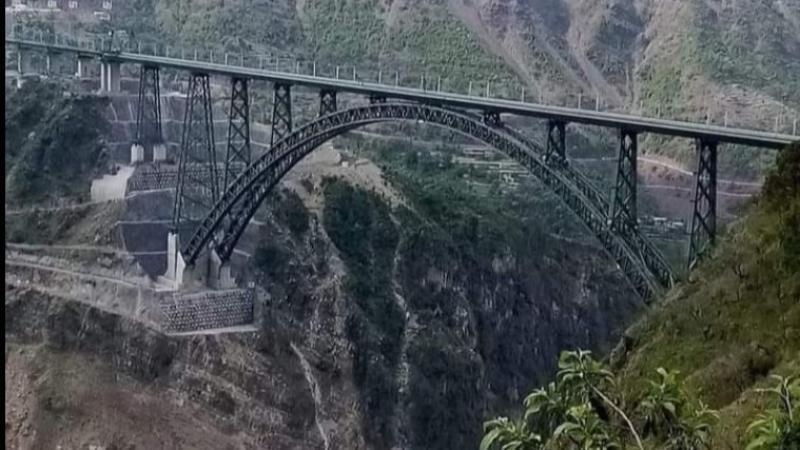
The Chenab Bridge: An Engineering Marvel
The Chenab Bridge, located in the Indian state of Jammu and Kashmir, is a testament to human ingenuity and innovation in engineering. Spanning the Chenab River, this majestic bridge is not only an architectural wonder but also a marvel of modern engineering. Its sheer scale and complexity are awe-inspiring, making it a fascinating subject of study for engineers and researchers worldwide. In recent years, a team of researchers from the Indian Institute of Science (IISc) has been investigating the rock slope stability of the Chenab Bridge, employing cutting-edge techniques to ensure its safety and resilience.
A Monumental Structure
The Chenab Bridge, also known as the Maharaja Ranjit Singh Bridge, is the world’s tallest railway bridge, standing at an impressive height of 359 meters (1,178 feet). Its length spans 1.3 kilometers (0.8 miles), connecting the cities of Baramulla and Srinagar in the Kashmir Valley. The bridge’s design is a marvel of modern engineering, with a unique combination of arches, piers, and abutments that support its massive weight. The structure is a testament to the skill and expertise of the engineers and workers who built it, overcoming numerous challenges to complete this monumental project.
Stabilizing the Bridge
Despite its impressive design, the Chenab Bridge faces unique geological challenges. The terrain surrounding the bridge is characterized by steep rock slopes and unstable soil, which can pose significant risks to the structure’s stability. To address these concerns, the IISc research team employed innovative techniques to study the rock slope stability of the bridge.
Kinematic Analysis and Finite Element Modelling
The researchers used a combination of kinematic analysis and finite element modelling to investigate the rock slope stability of the Chenab Bridge. Kinematic analysis, a technique used to study the motion of rocks and soil, helped the team identify potential failure zones and unstable areas. Finite element modelling, a computational method that simulates the behavior of complex systems, allowed them to analyze the stress and strain patterns within the rock and soil.
Targeted Reinforcement and Ongoing Monitoring
The research highlights the importance of targeted reinforcement and ongoing monitoring for infrastructure resilience in complex terrains. The team’s findings suggest that reinforcing specific areas of the bridge, such as the rock slopes and piers, can significantly improve its stability. Ongoing monitoring of the bridge’s condition, using advanced sensors and monitoring systems, is also crucial to ensure its safety and resilience.
The Significance of the Research
The IISc research has significant implications for the construction and maintenance of similar infrastructure projects in challenging terrains. By employing advanced modelling techniques and targeted reinforcement strategies, engineers can improve the stability and resilience of structures, reducing the risk of accidents and ensuring the safety of users.
Conclusion
The Chenab Bridge is an engineering marvel, a testament to human ingenuity and innovation. The research conducted by the IISc team highlights the importance of targeted reinforcement and ongoing monitoring for infrastructure resilience in complex terrains. As engineers and researchers continue to push the boundaries of what is possible, projects like the Chenab Bridge will remain a source of inspiration and admiration for generations to come.
News Source:






